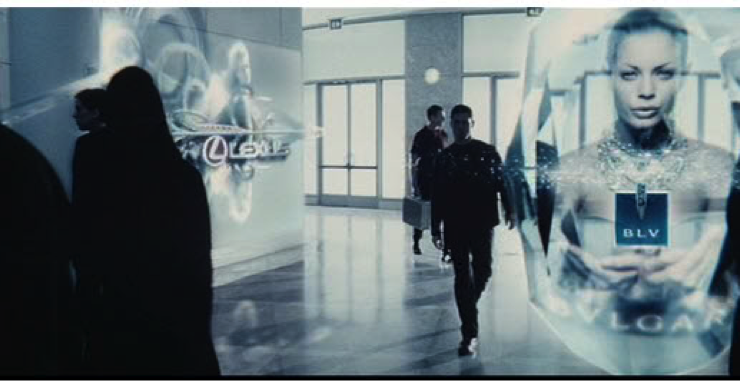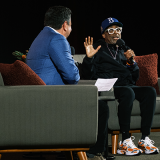
Film Assignment More Relevant Than Ever
November 17, 2014
This past September at Impact14, I had a déjà vu moment that has been about ten years in the making. I’ll set the stage:
I was at the annual conference hosted by the Internet Marketing Association, an organization established by Chapman University alumnus Sinan Kanatsiz. During the presentation by Kreg Peeler, CEO at SpinGo, Peeler showed a clip from the film Minority Report. It triggered something inside me since that was the very film I had been tasked with watching and reviewing prior to coming to Dodge College nearly a decade ago.
My assignment, prior to starting film school, was to watch the film and write about it. “Film school is going to be great!” I thought. I didn’t realize until now how relevant and pervasive the concept of that film would become to me as a digital marketer in the today’s world.
Tom Cruise’s character has just been retrofitted with a pair of new “eyes” in a world where advertisements are triggered by displays scanning the retina of passersby. Cruise’s character makes his way through an onslaught—literally—of interactive video ads and holographic images walking into a retail Gap store to buy a pair of pants. I thought to myself, ‘It’s ironic to be watching the character navigate such an onslaught of ads because that is my current challenge as a digital marketer.’ That’s what I have to figure out how to do today; reaching consumers amidst the clutter of messages and advertisements. My film school education continues to influence my current career as a digital marketer, because marketing is rooted in storytelling, which is the essence of filmmaking.
As marketers, we’re just now getting to a point where technology and data can be combined to provide personalized offers from wearable devices. Push notifications and beacon technology at retail locations can even begin to emulate the scene from Minority Report that I watched nearly a decade ago.
To me, it means we have to be smart and empathetic marketers. With the future in our hands, we have to be kind. We have to identify with consumers and court them, rather than bombard them with messaging. The data is out there and it’s being collected at an unprecedented pace. We are in an era of constant connectivity and it’s only going to get more complex. How we harvest and apply individualized and potentially sensitive data should guide how we engage with customers. It’s going to mean the difference between “Hello, Mister Yamamoto. Did you enjoy those tan pants you bought last week?”—a message that did not resonate with Cruise’s character—and the alternative, where consumers avoid the in-store experience altogether and choose to shop online at home away from all the noise.
Likewise, it means as storytellers, the visual medium remains powerful and relevant in today’s marketplace. It can awaken us to a future we do not want by bringing awareness to the one that is unfolding on our doorstep. I know that in my career today, as part marketer and storyteller, the story is what is important. I may not be making films, but the message behind them continues to inform and impact the integration of marketing online and offline.

